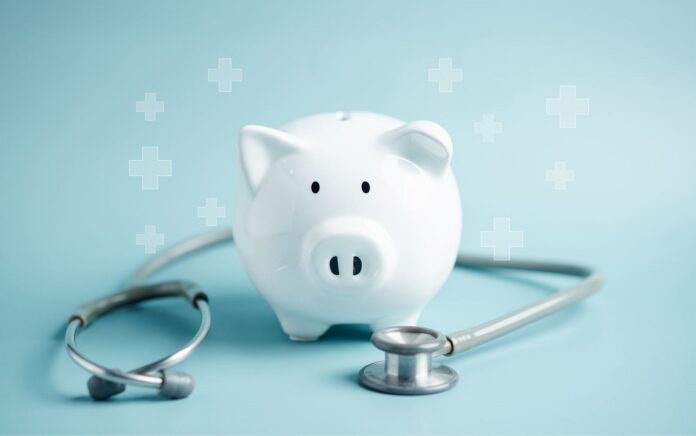To keep up with your Physical health, it is advisable to get your Health Checkup and blood work done on an annual basis. Same way your Financial Health also needs an Annual Health Check Up.
What’s a better time to do this than the start of the financial year. By this time, you must have gotten the idea how well you delivered in your work last year and how much of the bonus and salary appraisal you should expect. So, the Inflow part would be more or less clear.
Annual health checkup of Personal finances does not just involve how well your investments have performed in the last year, but it is about looking at the broad structure on which you are managing your personal finances.
Let’s delve deeper into the subject.
Annual health checkup of your Personal finances:
1. Checkup the Liquidity status:
This will give you an idea on how liquid your financial position is. As in how easily you can withdraw and use your money in case some stressful situation comes up.
Will you need to dip into your investments or already enough balance is available in Liquid funds or savings accounts? If you have to dip into your investments, how liquid is your investments? What percentage of your Net worth is locked into Real estate or allocated in financial investments? Are you more into Insurance policies (ULIPs/Traditional), PPF, EPF kind of illiquid Investments or FD/Mutual funds kinds of liquid products?
I call it a stress test of personal finances. Just like every financial institution is expected to do this test on their Portfolios to check its health and liquidity situation. Investors at their level should apply this on their overall financial structure.
You may calculate the Liquidity Ratio and Financial Asset Ratio to have a clear view on your Liquidity status.
(A) Liquidity ratio measures how well you are equipped to meet your expenses from the Liquid money available in savings bank, FD or very short-term debt funds. This is calculated as: Liquid Assets / Monthly expenses.
(B) Financial Assets ratio is calculated to assess the portion of financial assets in the total assets profile. Financial assets have the advantage of greater liquidity, flexibility, convenience of investing and ease of maintaining investments. This ratio can be calculated as {(Financial Assets / Total Assets) *100}
2. Your Loan Profile: Ratios Plus Cibil report
This Test will let you understand your loan breakup, which involves the types of loans you have (Good/Bad), the Cash flow situation to manage the EMIs well, and if the EMIs eating upon the surplus which is not letting you to save well for your goals?
I call these tests the Lipid Profile of your Personal Finances.
A lipid profile is one of the many medical tests which are conducted to check the overall health of the person. Debt and Cash flow analysis is one of the many areas which needs to be watched for overall financial health.
Your Savings to Income ratio, Total Debt to Total Assets, EMIs to Income Ratio comes under this Lipid Profile check.
Read this article for more details.
While working on the loan numbers, do also check your Cibil Score. This is important even if you are not serving any loan. Every financial institution checks your CIBIL score before approving your loan application.
If by any chance, due to any institution’s fault and misreporting your score has gone down, then you will be the sufferer. So it is wise to keep an eye, and get this resolved timely.
3. Investments Profile – Allocation and Diversification
Your Financial Health also depends on how well are you allocated in different Investment, and diversified in those Specific Assets. In other words, if you are having a balanced diet with all the colors in your meal, so as to have proper nutritious food.
Asset Allocation and Diversification are not the new words to the Investors, though these are very difficult to follow in any investment market scenario. In the Bull market every second investor wants to have more equity and in the bear market, investors prefer more debt.
In Fact during the bull market, when you look closely in many portfolios you will have lots of overlapping stocks and strategies in their mutual funds or PMSs which shows zero or very less diversification.
To Know: Investor Beware: 5 Costly Mistakes to Evade in a Rising Stock Market
To have your financial health in check you have to be sure that your long term portfolio should be well allocated and diversified so as to support your Risk profile and your goals, with consistent and above average returns.
You are also required to keep reviewing and redoing your Risk profiling exercise, which I call Blood Pressure Check to have the right kind of Investments and allocation in your portfolio, suitable to your Risk tolerance.
Conclusion:
We normally tend to connect the term Annual Health checkup to Physical Health only, but just like Physical health, your Spiritual, Social and Financial health, also plays an equal role in your overall wellness. It is not wise to understand Financial Health in terms of the quantum of money in your accounts and investments, but the quality of the investments is also important. Your loans should also be reviewed, and you should strive to pay off the high-cost loans as soon as possible.
In terms of Personal Finances, Stay Planned…Stay Healthy mantra always helps.







 Manikaran Singal is the founder and Chief financial planner at Good Moneying Financial Solutions. He is a CERTIFIED FINANCIAL PLANNER CM and SEBI registered Investment adviser (Regd no. INA 100001620). He’s having 20+ years of experience in financial services space.
Manikaran Singal is the founder and Chief financial planner at Good Moneying Financial Solutions. He is a CERTIFIED FINANCIAL PLANNER CM and SEBI registered Investment adviser (Regd no. INA 100001620). He’s having 20+ years of experience in financial services space.

